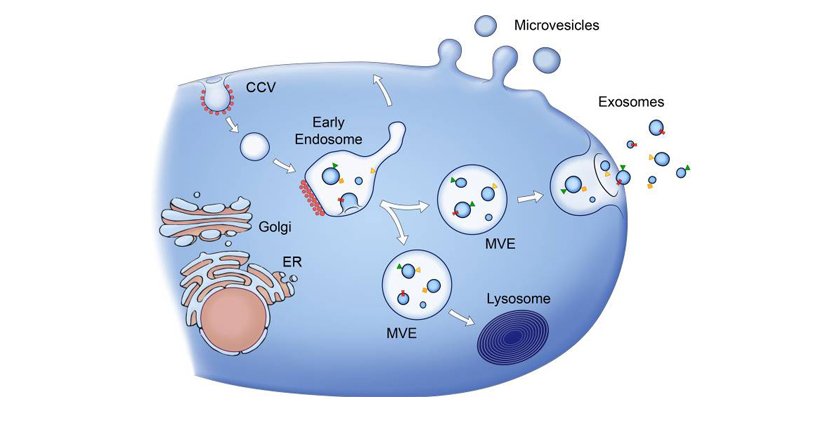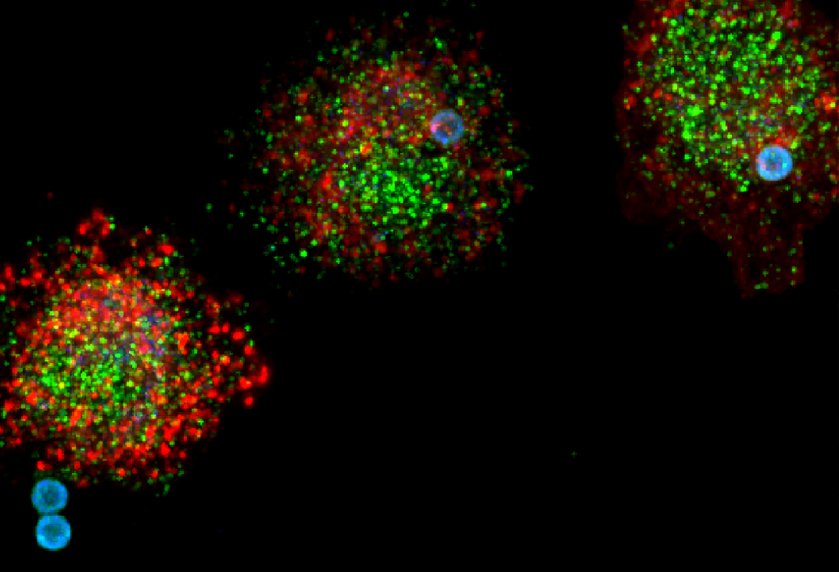The Role of Subcellular Trafficking in Immune Regulation
Novel strategies to fight infectious diseases and cancer require in-depth understanding of how immunity is regulated at the subcellular level
Cells release different types of extracellular vesicles, including microvesicles that bud from the plasma membrane, and exosomes that are secreted by multivesicular endosomes (MVE). We are studying:
- Intracellular sorting mechanisms that determine the molecular content of extracellular vesicles
- The role of extracellular vesicles in immune regulation
- The potential of extracellular vesicles to be used as biomarkers for disease

Immune stimulation
Our research group has a longstanding expertise in the cellular and molecular mechanisms that drive and regulate MHC class II peptide loading and trafficking by dendritic cells (DCs), which is key to understanding adaptive immunity. We investigate molecular mechanisms for sorting of MHC molecules in endocytic compartments and molecular mechanisms that drive the formation and release of extracellular vesicles. For the initiation of adaptive immunity, antigens must be presented to CD4+ T cells in association with MHC class II molecules by dendritic cells (DCs). Within DCs, newly synthesised MHC class II is loaded in endosomal compartments with peptides derived from endocytosed antigen. Antigen loaded MHC class II is then expressed either at the plasma membrane or by secreted extracellular vesicles. Our ultimate aim is to use the acquired knowledge for vaccine improvement.

Immune tolerance
The second topic concerns extracellular vesicles from prostate epithelial cells, called prostasomes. A major function of prostasomes in semen is to immunosuppress the female reproductive tract for immunogenic paternal alloantigens, which is an essential aspect for successful fertilisation. Similar to healthy prostate epithelial cells, (metastasized) prostate cancer cells produce massive amounts of prostasomes with the likely consequence of tolerising the male immune system for prostate tumor associated antigens, and explaining the frequent occurrence of prostate cancer. This research line aims to:
- Understand the immune regulatory mechanisms of prostasomes, allowing interference with prostate cancer progression
- To develop prostasomes as a biomarker vehicle for prostate cancer
Imaging subcellular transport
We accommodate a high-end fluorescence microscopy facility (CCI). Next to Confocal/MultiPhoton microscopy in live or fixed samples, we also use Structured Illumination Microscopy (SIM) and Single Molecule Localisation Microscopy (SMLM) to visualise intracellular and intercellular transport processes. The CCI is a multi-user facility for scientists of the Faculty of Veterinary Medicine and other faculties affiliated with the Utrecht Life Sciences. The CCI also provides scientific advice and training on CCI equipment. At Cell Biology we employ this facility to develop tools to characterise and measure EV production, targeting, and downstream effects of delivery to the targeted cells.

